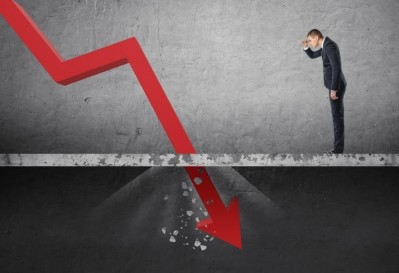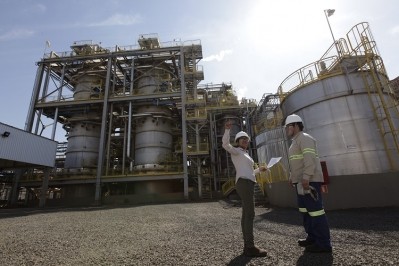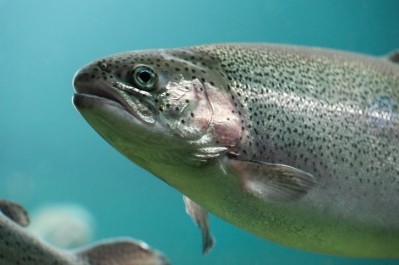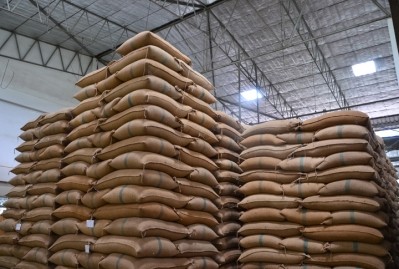Feeding strategy speeds growth in Arctic charr, may unlock growth enhancing practices for farmed fish
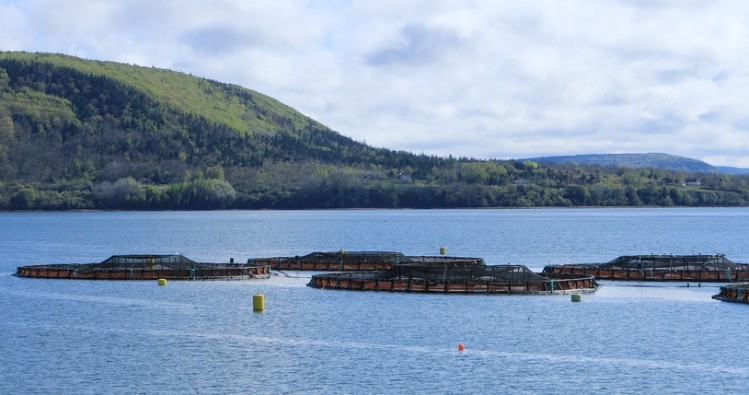
A team of researchers in Canada explored the practice of fasting and refeeding on Arctic charr to track the role of protein and metabolism in accelerating the growth of farmed fish. The group members published their work in the journal of Comparative Biochemistry and Physiology.
“This study uses a fasting and refeeding approach to better understand the roles of protein degradation and miRNAs in growth regulation of fish,” the researchers said. “In this study, Arctic charr were subjected to 101 days of food deprivation followed by 126 days of refeeding to satiety, which resulted in a partial compensatory growth response.”
During the fasting and feeding trial, the researchers found that the fasting period decreased the hepatosomatic index (HSI) in fish and the intestinal somatic index (ISI) – but, both rebounded during the refeeding period. The mRNA transcripts involved with protein degradation in muscle also were increased during the restricted feeding period and lowered during refeeding.
“We've shown that miRNAs (miR-29a and miR-223) could be involved in fish glycogen homeostasis during the early stages of refeeding,” they said. “These findings provide a deeper understanding of the molecular mechanisms regulating growth in fish.”
“Understanding the molecular mechanisms involved in the compensatory growth response could provide new approaches for enhancing growth in farmed fish,” they added.
Why explore fasting and refeeding?
Growth during a refeeding period following a fasting stage can be faster than growth in continuously fed animals, the researchers said. The increased growth period is called “compensatory growth” and involves a series of gene expressions and silencings through changes in the chromatin structure.
The process has been noted in several species, but has been of specific interest in fish, they said. However, there are still gaps in the understanding of how the response is governed.
Protein degradation can be a pivotal but overlooked regulator in growth as the three major protein degradation pathways have a role in controlling protein accretion, they said. “In fish muscle, lysosomal cathepsins are the primary drivers of protein degradation (Cassidy et al., 2016; Seiliez et al., 2014), and hydrolyze proteins inside vacuoles called lysosomes in the autophagic pathway,” they added.
“Calpains are non-lysosomal calcium-dependent proteases found in greater concentrations in skeletal muscle (Nemova et al., 2016),” the researchers said. “Calpains are also known to initiate proteasomal and lysosomal degradation of myofibrillar proteins leading to muscle atrophy in mammals.”
The ubiquitin-proteasome pathway (UPP) requires ATP degradation that is involved in recycling damaged proteins, they said. The UPP takes two major steps – ubiquitin molecules attach to the protein substrate using enzymes and then the proteasome complex identifies and degrades the polyubiqutinated proteins.
The microRNAs (miRNAs) also are regulators of growth and metabolism and control the expression of mRNAs, they said. Previous studies found they likely influence nutritional strategies in rainbow trout and may express differently in Atlantic salmon during stress.
“While mounting evidence suggests key roles for miRNAs in regulating selected targets in pathways relevant to fish metabolism, information is lacking with respect to modulated miRNAs during starvation and refeeding,” they said.
Arctic charr is a freshwater fish species known to display compensatory growth following fasting periods, the researchers said. In the wild, the species can be subject to seasonal variation in feeding and growth.
“During winters, Arctic charr experience low food availability with negative growth and summers are considered a short window of opportunity to replenish depleted energy reserves, and presumably catch up on growth,” they added.
Methods and materials
In the feeding and fasting study, about 1,800 fish were raised in four tanks, the researchers said. Fish in two of the tanks were given a restricted diet for a period of 101 days – January through April – then returned to a satiation diet for 126 days and the control tank fish were fed to satiation for the entire experimental period.
Fish body mass and length was noted monthly during the feeding trial, they said. A selection of fish was harvested on day 101 of the starvation period and on days 2, 5, 8, 16, 23 and 43 of the refeeding period to record mass and length and check for changes in protein metabolism. Tissue samples also were collected to assess polyubiquitinated proteins, enzyme activity and transcript levels of specific mRNAs and miRNAs.
“These sampling dates were based on the assumption that the fish would exhibit compensatory growth within 43 days after refeeding,” they added.
Feed efficiency (FE) was calculated monthly along with the specific growth rate (SGR), hepatosomatic index (HSI) and the intestinal somatic index (ISI).
Results
There were no fish mortalities during the feeding trial, the researchers said.
After the period of restricted feeding, the fish on limited diets dropped an average of 5.3g (SEM) of body mass, they said. However, the fish on feed gained about 72.7g.
“After feed restriction, starved fish body mass was approximately 72% that of fed fish,” they said. “Following the refeeding period, the starved group was able to reach 85% of the control group's average body mass.”
The specific growth rate was much higher for fish on the restricted diet following 126 days of refeeding, they added.
“The compensatory growth response is illustrated by the superior specific growth rates of the starved group after 86 and 126 days of refeeding compared to the continuously fed group,” the researchers said. “The feed efficiency remained relatively constant throughout the experiment and was not different between feeding groups.”
Fish on the restricted diets had lower HSI after the 101 days of starvation when compared to the control group fish, they said. The HSI of the starved fish had increased by 43 of refeeding but had not reached a level similar to the continuously fed group.
The ISI also was lower in the starved fish, however, had caught up with the control group fish by day 8 of the refeeding period, they said.
“Protein content of muscle and liver was similar in the fed and starved groups following the starvation period and during the first 43 days of refeeding,” they said. “Similarly, proteasome activity and the relative volume of polyubiquitinated proteins did not differ in liver and muscle nor did maximal activities of cathepsins and calpains in liver and muscle.”
The starvation period produced an upregulation of mRNA levels linked to protein degradation, and remained high during the initial weeks of refeeding compared to those found after 43 days, the researchers said. “At 43 days after refeeding, mRNA transcript levels in the starved group significantly decreased for cathepsin D transcripts and showed a strong decreasing tendency for the other measured transcripts,” they added.
Levels of measured miRNAs in starved fish normalized to those found in the control group fish during the refeeding period, they said. Levels in the control group fish did not change.
“We have observed, for the first time, a potential role for miRNAs in regulating metabolic processes upon refeeding and prior to the compensatory growth response,” they said. “Understanding the molecular mechanisms involved in the compensatory growth response could provide new approaches for enhancing growth in farmed fish.”
Source: Comparative Biochemistry and Physiology Part A: Molecular & Integrative Physiology
Title: Effects of fasting and refeeding on protein and glucose metabolism in Arctic charr
Authors: A. Cassidy, P. Blier, N. Le François, P. Dionne, P. Morin, S. Lamarre
DOI: doi.org/10.1016/j.cbpa.2018.08.010
